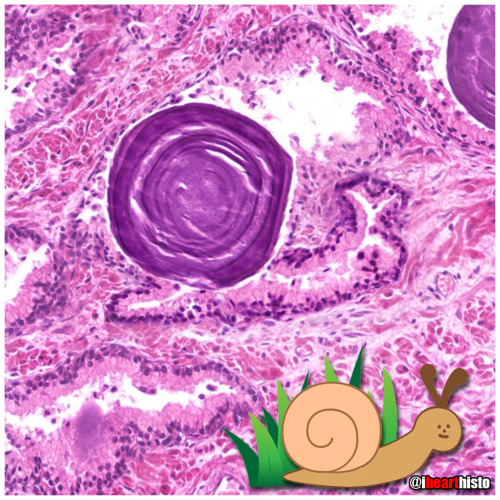#med lab sci
Prostate Snail
A secretory gastropod with a corpus amylaceum shell!
i❤️histo
This image is a close up view of a slice through the prostate gland!
The glandular portion of the prostate is composed of secretory acini that release prostatic fluid into a duct system within the gland. Prostatic fluid is a major component of semen and is rich in protein and sugar that keeps spermatozoa nourished as they travel through the reproductive tract.
The snail’s head and body are composed of the secretory epithelial cells!
The giant shell of the snail is a structure known as a prostatic concretion (corpus amylaceum or starchy body). This is a substance thought to be composed of thickened prostatic secretions and shed cells that is found in the acini and ducts of the prostate gland - it is of unknown significance.
However, these structures do increase in number with age and are a useful identifying feature of prostate in both non-pathological and pathological prostate specimens.
The space between the secretory acini is filled with a mixture of fibrous connective tissue and smooth muscle.
The smooth muscle is important because it contracts during ejaculation to push the prostatic fluid out of the gland and into the prostatic urethra where it mixes with spermatozoa arriving from the testis.
The connective tissue component is important clinically because as people with prostate glands grow older this fibrous tissue can undergo hyperplasia (excessive growth). This growth can constrict the urethra which passes directly through the prostate gland. The urethra, in addition to conveying semen during ejaculation, also carries urine during micturition/urination. This explains some of the symptoms associated with the common disorder, benign prostatic hyperplasia when urination becomes problematic for the elderly.
Post link

